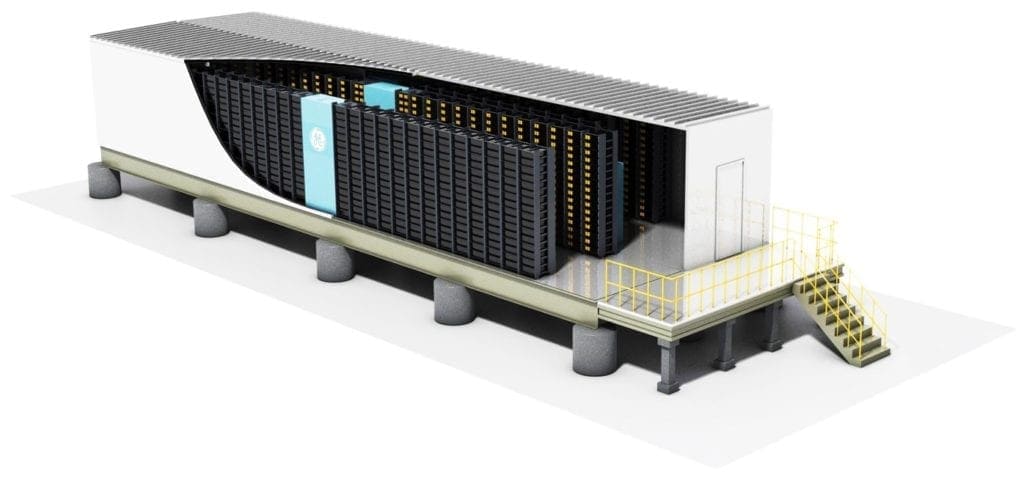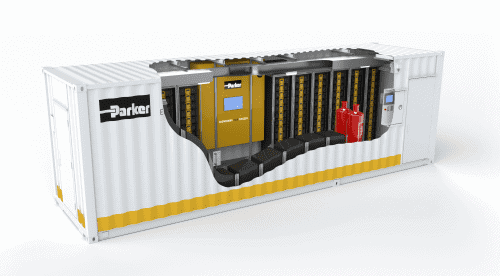The storage of energy will play a fundamental role in the transformation of the global electricity industry in the coming decades. The technological advances of the last 25 years have increased the attractiveness and viability of storage, making it a pivotal tool to supply the electricity in a cleaner, more reliable and efficient way.
The electrical industry was born and grew under the premise that electricity is generated, transmitted and distributed to the consumer, without it being necessary to store it. Today, in order to reliably supply users, plants must produce the right amount of electricity at a precise moment, even if this means turning on expensive generating and polluting power plants during demand peaks.
The massive incorporation of low-cost storage promises to change the current paradigm of the electrical industry. New technologies, like Energy Storage Battery – will function as a sponge that absorbs surplus or low-cost energy at times of lower demand and returns it to the electricity grid at peak times.
Do you know how many ways you can store energy? Advances in this area are not as well known, but they will be decisive in making the most of the benefits of clean energy. As the storage capacity of the electrical system increases, we will observe four fundamental transformations.
- First, The Deployment Of Wind And Solar Energy Will Be Accelerated: For decades, skeptics of this type of energies have criticized its intermittent nature; that is, they only generate electricity when the wind blows, or the sun shines, and not necessarily during the periods of highest demand. Storage solves this problem since it will be possible to store renewable energy and consume it at any time of the day. In this way, an old prejudice has been brought down as we move towards a cleaner energy system with less environmental impact.
- Second, The Generation Of Energy Will Be Democratized: In both urban and rural environments, it is increasingly common to observe solar roofs in homes and small businesses that generate their own electricity. These users can complement their photovoltaic panels with storage equipment, which allows them to save and sell their surplus electricity back to the network. This multidirectional model will empower users as producers and consumers at the same time, will provide them with greater autonomy, and will facilitate the consumption of electricity in remote and difficult-to-access locations.
- Third, Energy Security Will Be Strengthened: The proliferation of storage projects will diversify the supply points and minimize the bottlenecks of the electrical system. In this way, we will be less vulnerable to the impact of meteorological phenomena, attacks on critical infrastructure and supply interruptions of a geopolitical nature.
- Fourth, The Operation Of The Electrical System Will Be More Efficient: In addition to taking the pressure off the generating plants, storage technologies bring multiple benefits to the electricity grid. For example, they start with great agility before any eventuality, offer backup power, help stabilize the frequency and voltage of the system, contribute to reducing energy losses, and decongest and lengthen the useful life of transmission and distribution networks.
Energy Storage Battery
When we consider buying a Handheld Instrument Battery for an autonomous solar system, we must know the daily consumption that is expected. In this way, it is possible to identify the electrical energy necessary to supply the installation in case the solar irradiance is low, and the photovoltaic panels do not provide energy.
To know the consumption, we can use the consumption calculation table, where reference is made to the electrical equipment used in a home, and of which we will have to know its power and time of use (the table shows power values approximate).
If we know the energy that is used daily, it is possible to size the battery to store enough energy during the autonomy time that we want our system to have without the need for solar input.
In this way, we dimension the battery in the first place taking into account the energy consumed daily, the days of autonomy that we want to have and the depth of discharge.
In this way, making an approximation, if we have a system of 400 W of daily consumption, and we intend to have autonomy of 2 days, we must choose a battery with real accumulation capacity of 800 W. This is that the ability of the battery is 800 W, taking into account the percentage of battery discharge.
In the case of monoblocks, it is 50% while in the case of stationary it can be considered 60%; therefore for a monoblock battery, we must have 1600 W of real capacity while in a stationary one it is 1333 W.
The choice of one type or another of the battery can be made depending on whether the use is daily or the power of the installation. In this case, the power of the system is low so that the monoblock would be the most appropriate.
Related Topics
- How to Buy an Air Conditioner
- How to Buy Inverter
- Power Inverter Prices
- Best 20KVA Generators
- Understanding Your iPhone’s Battery
- Inverter Battery
- Using Auto Shrink Wrapping Machines
- Robotic Dispensing System
- How to Buy a Generator
- Latest Innovations in Metal Marking Equipment
- Ways Coordinate Measuring Machine Can Improve Efficiency on Production Line








